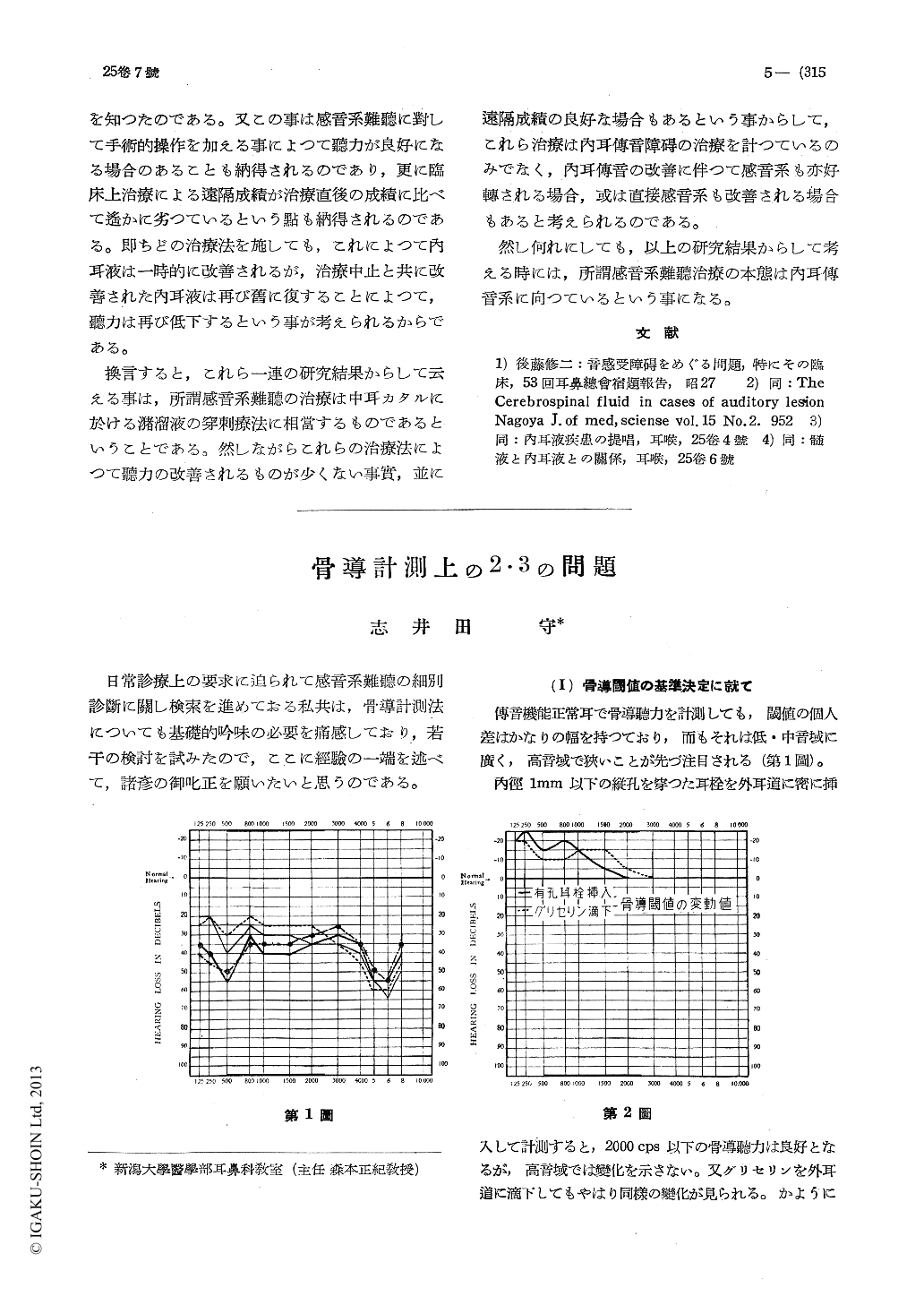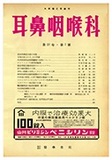- 有料閲覧
- 文献概要
- 1ページ目
日常診療上の要求に迫られて感音系難聽の細別診斷に關し検索を進めておる私共は,骨導計測法についても基礎的吟味の必要を痛感しており,若干の検討を試みたので,ここに經驗の一端を述べて,諸彦の御叱正を願いたいと思うのである。
SHIIDA investigates problems in audiometry that concern with bone-conductions; following results are obtained: (1) Sharper diagnostic acumen for different types of deafness may be attained, if the standard the point which serves as refer-ence might be selected in the bone con-ductor at the highest normal threshold for low-tone region and visa versa, at the lowest for the high-tone. Preference is made in selecting the type of bone con-ductor for one that is provided with that has a peak in the high-tone region.
(2) In face of conductive lesions bone con-ducted hearing acuity falls to thresholds below 2,000 cps; therefore, thresholds that are above that value must coincide with those of perceptive hearing proper.
(3) In the principle of making there is no fundamental difference whether it is app-lied to air or bone conduction. But prac-tically, making of bone conduction is a difficult prodlem because of the amount of conduction loss which is so small. if a masking reciever is used the effect produced would be similar to the condition where the external canal be occluded to increase the conductivity of low-tones thereby, defeating the purpose for which it may be used. However, the hurdle as such may be overcome by use of low-tone noise etfects. Other elements which enter into the procedure that have influencing effects are types of deafness with which the patient is affected and his psycholo-gical attitude; both of these require a due consideartions. In cases affected with retrolabyri thine deafness overmasking may readily occur.
(4) Application of Onchi's Test, which is an adequate bone conduction test, may be interfered with by an apparition of shad-dow hearing. To circumvent this difficulty the thresholds of bone conduction in the high-tone regione may be transposed and interpreted as diagnostic results.

Copyright © 1953, Igaku-Shoin Ltd. All rights reserved.


